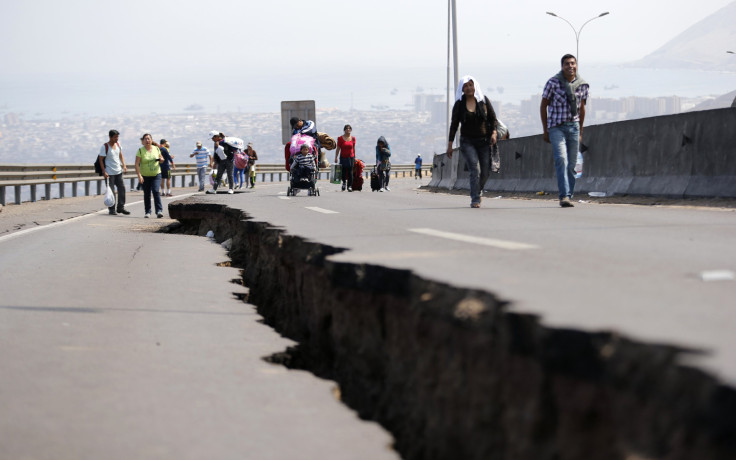Mega Earthquake: Chile Is Long Overdue For ‘The Big One’

Chile is no stranger to big earthquakes, but the largest of them all could soon be on its way. Scientists say “the Big One,” an earthquake whose magnitude could top 8.9 on the Richter scale, has been building for some 140 years -- and, like a loaded spring, could snap at any moment.
Chile faces a massive earthquake -- a “megaquake” -- somewhere along a seismically active, 500 kilometer stretch of its coastline, according to two separate studies published recently in the journal Nature. “Significant sections of the northern Chile subduction zone have not ruptured in almost 150 years, so it is likely that future megathrust earthquakes will occur,” the authors of the studies concluded.
That’s tough news to digest for a country whose residents have endured some major tremors over the years, not least among them a massive magnitude 8.8 earthquake that struck the central coast in 2010 and killed some 700 people. Then there was the 8.2 quake that rattled the northern Chilean city of Iquique in April. And those are only the most recent; Chile has had 13 earthquakes of magnitude 7.0 or higher since 1973, according to Time.
Experts warn against assuming the worst is over. "Even though a very large quake has already happened this year, the hazard has not vanished," Gavin Hayes of the U.S. Geological Survey in Golden, Colorado told New Scientist. "The issue now is communicating that … as the tendency would be for people to think the quake has passed."
Most earthquakes occur along the boundaries between the continental and oceanic plates that make up Earth’s crust, called fault zones. Chile lies atop one of the most volatile faults. As these plates ram together, pull apart or scrape past each other, they trigger earthquakes.
Tension has been building along Chile’s fault zone since the last megaquake hit the country in 1877, and experts fear the time for it to release could be soon. "The Big One may still be to come," a University of California geologist Roland Burgmann, told AFP.
© Copyright IBTimes 2024. All rights reserved.






















